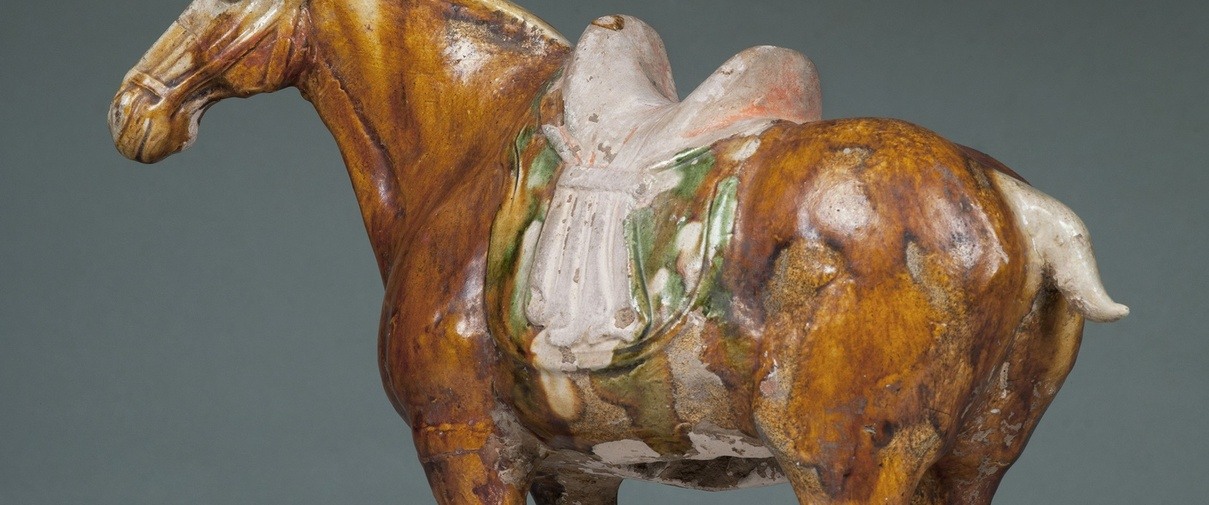Tang horse
A real prestige horse
During the Tang dynasty (618 - 907), China was an open and cosmopolitan country. There was lively trade between China and the Mediterranean via the famous Silk Road. Horses and camels played an important role in the transport of goods. The horses, bred in Central Asia, were also objects of prestige at the Chinese court. They had their own names and some Tang emperors had portraits of their favorite horses made by their court painters.
Even in the afterlife, the Chinese elite did not want to miss their beloved horses. This earthenware horse was made as a burial object for the dead. Although it is more than a thousand years old, it has a particularly modern look. This is partly due to the glaze. The so-called sancai (a three-colour glaze) in brown, green and honey is not applied evenly, but rather splashed onto the horse's body.
During the Tang period, horses and other figures were often mass-produced using a mold. This allowed for certain shapes or models to be mass-produced. However, this also made it possible to copy the ‘Tang horses’, including the spontaneous-looking three-color glaze.
